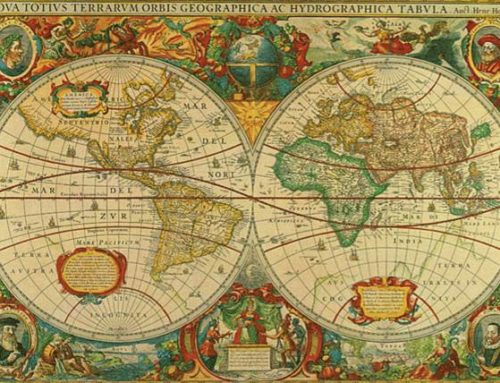AP Calculus AB and AP Calculus BC focus on students’ understanding of calculus concepts and provide experience with methods and applications. Although computational competence is an important outcome, the main emphasis is on a multirepresentational approach to calculus, with concepts, results, and problems being expressed graphically, numerically, analytically, and verbally.The connections among these representations are important.
Teachers and students should regularly use technology to reinforce relationships among functions, to con rm written work, to implement experimentation, and to assist in interpreting results.Through the use of the unifying themes of calculus (e.g., derivatives, integrals, limits, approximation, and applications and modeling) the courses become cohesive rather than a collection of unrelated topics.
Course Overview
AP Calculus AB is roughly equivalent to a rst semester college calculus course devoted to topics in differential and integral calculus.The AP course covers topics in these areas, including concepts and skills of limits, derivatives, de nite integrals, and the FundamentalTheorem of Calculus.The course teaches students
to approach calculus concepts and problems when they are represented graphically, numerically, analytically, and verbally, and to make connections amongst these representations.
Students learn how to use technology to help solve problems, experiment, interpret results, and support conclusions.
Recommended Prerequisites
Before studying calculus, all students should complete the equivalent of four years of secondary mathematics designed for college-bound students: courses which should prepare them with
a strong foundation in reasoning with algebraic symbols and working with algebraic structures. Prospective calculus students should take courses in which they study algebra, geometry, trigonometry, analytic geometry, and elementary functions.
These functions include linear, polynomial, rational, exponential, logarithmic, trigonometric, inverse trigonometric, and piecewise- de ned functions. In particular, before studying calculus, students must be familiar with the properties of functions, the composition of functions, the algebra of functions, and the graphs of functions. Students must also understand the language of functions (domain and range, odd and even, periodic, symmetry, zeros, intercepts, and descriptors such as increasing and decreasing). Students should also know how the sine and cosine functions are de ned from the unit circle and know the values of the trigonometric functions at the numbers 0, π/6, π/4, π/3, π/2, and their multiples. Students who take AP Calculus BC should have basic familiarity with sequences and series, as well as some exposure to polar equations.
Use of Graphing Calculators
Professional mathematics organizations have strongly endorsed the use of calculators in mathematics instruction and testing.The use
of a graphing calculator in AP Calculus AB is considered an integral part of the course.
The Big Ideas of AP Calculus
The course is organized around the foundational concepts of calculus:
I. Limits:
Students must have a solid, intuitive understanding of limits and be able to compute one-sided limits, limits at in nity, the limit of a sequence, and in nite limits.They should be able to apply limits to understand the behavior of a function near a point and understand how limits are used to determine continuity.
II. Derivatives:
Students should be able to use different de nitions of the derivative, estimate derivatives from tables and graphs, and apply various derivative rules and properties. Students should also be able to solve separable differential equations, understand and be able to apply the Mean Value Theorem, and be familiar with a variety of real-world applications, including related rates, optimization, and growth and decay models.
III. Integrals and the FundamentalTheorem of Calculus:
Students should be familiar with basic techniques of integration, including basic antiderivatives and substitution, and properties
of integrals. Students should also understand area, volume, and motion applications of integrals, as well as the use of the de nite integral as an accumulation function. It is critical that students understand the relationship between integration and differentiation as expressed in the FundamentalTheorem of Calculus.
Mathematical Practices for AP Calculus
The Mathematical Practices for AP Calculus (MPACs) capture important aspects of the work that mathematicians engage in, at the level of competence expected of AP Calculus students. These MPACs are highly interrelated tools that should be used frequently and in diverse contests to support conceptual understanding of calculus.
1. Reasoning with de nitions and theorems
2. Connecting concepts
3. Implementing algebraic/computational processes 4. Connecting multiple representations
5. Building notational uency
6. Communicating
AP CALCULUS AB EXAM: 3 HOURS 15 MINUTES
Assessment Overview
The AP Calculus AB Exam questions measure students’ understanding of the concepts of calculus, their ability to apply these concepts, and their ability to make connections among graphical, numerical, analytical, and verbal representations of mathematics. Adequate preparation
for the exam also includes a strong foundation in algebra, geometry, trigonometry, and elementary functions, though the course necessarily focuses on differential and integral calculus. Students may not take both the Calculus AB and Calculus BC Exams within the same year.
The free-response section tests students’ ability to solve problems using an extended chain of reasoning. During the second timed portion of the free-response section (Part B), students are permitted to continue work on problems in Part A, but they are not permitted to use a calculator during this time.
Format of Assessment
Section I: Multiple Choice | 45 Questions | 1 Hour, 45 Minutes | 50% of Exam Score
• Part A: 30 questions; 60 minutes (calculator not permitted)
• Part B: 15 questions; 45 minutes (graphing calculator required)
Section II: Free Response | 6 Questions | 1 Hour, 30 Minutes | 50% of Exam Score
• Part A: 2 questions; 30 minutes (graphing calculator required) • Part B: 4 questions; 60 minutes (calculator not permitted)







Leave A Comment
You must be logged in to post a comment.